What is EDM in Surveying?
Important Point
This EDM surveying deals with the principle of EDM in surveying and procedures of separate EDM instruments in surveying that are mountable with optic/electronic theodolites.
The EDM full form in surveying is Electronic Distance Measuring.
Original EDMs were individual units used only for distance measurements.
EDM instruments used as modular components in modern total stations also work under the same principle of separate EDM instruments.
EDM was first introduced in the 1950s and has undergone several modifications.
The early versions of the instruments, though very precise over long distances, were very large, heavy, complicated, and expensive.
Electronic theodolite/optic theodolite mountable EDM was introduced first, and these are being used still today.
Rapid advances in related technologies have provided lighter, simpler, and less expensive instruments.
The latest versions of EDM instruments are used as a modular component of total stations.
Some earlier versions of EDM instruments used natural light for the calculation of distances, but the latest version of EDM uses infrared light, laser light or microwaves.
Also, read: Methods of Design
Types of EDM Instruments
Depending on the types of EDM in surveying, or more specifically the types of carrier wave employed, EDM instruments can be classified under the following three heads:
- Infrared Instruments.
- Microwave Instruments.
- Visible Light Instruments.
For the corresponding frequencies of carrier waves, the reader may refer back to as per fig no-5.
It is seen that all the above three categories of EDM instruments use short wavelengths and hence, higher frequencies.
1. Infrared Instruments
Infra-red radiation (IR) classifies these instruments most commonly utilized in engineering.
The IR has wavelengths of 0.8-0.9 pm transmitted by gallium arsenide (GaAs) luminescent diodes, in a high, continuous frequency.
The accuracies needed in distance measurement are those that the measuring wave can’t be used directly because of the poor propagation characteristics.
The measuring wave is consequently superimposed on the high-frequency waves created, called carrier waves.
The superimposition is achieved by amplitude (as per below fig-5), frequency (as per below fig-6), or impulse modulation (as per below fig-7).
In the case of IR instruments, amplitude modulation is utilized.
Hence the carrier wave develops the necessary measuring characteristics whilst keeping the high-frequency propagation characteristics, which could be measured with the necessary accuracy.
Lots of the tools using visual light waves have a greater range and a far greater accuracy than that required for more general surveying work.
Lots of the tools using visual light waves have a greater range and a far greater accuracy than that demanded for more general surveying work.
Typical of these tools are the KernMekometer ME 5000, accurate to ±0.2 mm ±0.2 mm/km, with a range of 8 km, as well as the Com-Rad Geomensor CR234.
Also, read: Difference Between One Way Slab and Two Way Slab | What is Slab
2. Microwave instruments
Microwave tools utilize radio wavelengths as carriers and for that reason, need two instruments, one at the end of this line to be quantified, which are capable of receiving and transmitting the signals.
The microwave carrier is always frequency modulated (as per below fig-6) for measuring purposes and has wavelengths usually in the order of 10 cm and 3 cm.
Useful Article for You
- What Is a Grade Beam
- What Is Flooring
- What Is Shoring
- What Is a Bridge Abutment
- What Is a Cold Joint in Concrete
- What Is the Strongest Foundation for a House
- What Is a Well Point
- What Is a Floating Slab
- What Is Grouting
- What Is Rcc Value Day
- What Is a Stair Landing
- What Is Optimum Dry
- What Is a Moment Frame
- What Is Standard Water Pipe Size in Residential
- What Is Flagstone
- What Is a Door Frame
- What Is an Admixture
- What Is a Frost Wall
- What Is Undercoat
- What Is Bituminous Pavement
As these instruments don’t rely on the light being returned into the master instrument by a reflector, they may be used night or day in most weather conditions.
These instruments are capable of long ranges around 25 km and beyond, with typical accuracies of ±10 mm ±5 mm/km.
3. Visible Light Instruments
The final classification of equipment refers to those tools which use long radio waves with wavelengths of 150 m to 2 km.
They’re primarily used for position-fixing systems in hydrographic and oceanographic surveying.
Typical examples would be the Pulse 8 system as well as also the Syledis system, for offshore position fixing.
The above classification shows that it would also be possible to classify by range, for example
- Short-range, electro-optical instruments using amplitude-modulated infra-red or visible light with ranges up to 5 km.
- Medium-range microwave equipment, frequency modulated to give ranges around 25 km.
- Long-range radio wave equipment with ranges up to 100 km.
Also, read: What Is Cement | Types of Cement
Measurement Principle of EDM Instrument
The principle of the measurement device in EDM, which is currently used in a total station and used along with electronic/optic theodolites, is that it calculates the distance by measuring the phase shift during the radiated electromagnetic wave (such as infrared light or laser light or microwave) from the EDM’s main unit, which returns by being reflected through the reflector, which is positioned at a measurement point (as per below figure no-1).
This phase change can be regarded as a part of the frequency, which appears as the unit of length or time under a specific condition.
After the slope distance L along with the slope angle Ø are measured by EDM, if the elevation of point A is the reference point, we could find the elevation of point B from the following formula (According to below figure no-2)
As per figure no-4, shows a wave of wavelength λ.
The wave is traveling along the X axis with a velocity of 299,792,560.4 km/sec (approximate velocity of light in vacuum).
The frequency of This wave is That the time is taken for one complete wavelength.
- λ = c/f
- λ = Wavelength in meters
- c = velocity in km/sec.
- f = frequency hertz (one cycle per second)
As per fig, No-3 shows a modulated electromagnetic wave being emitted from an EDM instrument and being reflected and being reflected back to the instrument.
Here the double distance is taken as 2L, which is equal to the total whole number of wavelength nλ and the particle wavelength w.
Therefore, the distance between the EDM instrument and the reflector (L) is calculated as follows:
- L = (nλ + φ ) / 2 Meters
Useful Article for You
- What Is a Pitched Roof
- What Is a Parapet
- What Is Leveling
- What Is Gypsum Board
- What Is the Measurement for a Queen Size Bed
- What Is Considered Livable Space
- What Is One Way You Can Save Electricity?
- What Is Mdf Mean
- What Is a Bundle of Shingles
- What Is a Gallon of Water Weigh
- What Is Window Sash
- What Is a Sieve Analysis
- What Is the Little Black Diamond on a Tape Measure
- What Is the Difference Between a Bolt and a Screw?
- What Is Overhang
- What Is Sand Blasting
- What Is a Walk in Basement
- What Is Quarrying
- What Is a Concrete Slump Test
- What Is an Abutment Bridge
The partial wavelength (w) is determined by calculating the phase shift required and reflected waves, that is, by calculating the phase delay required to match precisely the transmitted and the reflected waves.
- S = Station
- r = Reflector component of addition constant
- Z= Target
- E = References plane within the EDM for phase comparison
- λ = Modulation of wavelength
- W = Fraction to be measured of a whole wavelength of modulation Δλ
- e = Distance meter component of addition constant
- R = Reference plane the reflection of the wave transmitted by the EDM
The instrument transmits a series of three or four modulated waves at different frequencies.
By substituting the resulting values of λ and w in the above equation for three or four different frequencies, the value of n can be found.
The Tools Were Created to carry out That procedure within seconds and display the value of L.
Some EDM instruments use pulsed laser emissions, and these instruments determine the distance by measuring the time taken between the transmission of this sign and the reception of the reflected signal, by taking advantage of the pulsed laser beam.
The velocity of light (electromagnetic waves) through the atmosphere can be affected by:
- Temperature
- Atmospheric pressure
- Water vapor content in the atmosphere
The corrections for temperature and pressure are determined manually by referring the monograms given with all total stations (as per below fig-4), or the corrections are calculated automatically in the instrument itself by inputting the values for temperature and pressure.
For measuring short distances using EDM instruments, atmospheric corrections are relatively insignificant.
For measuring long distances, atmospheric corrections become quite important.
Also, read: What Is a Bar Bending Schedule
Errors in Electronic Distance Measurement
Types of Error
- Personal Errors
- Instrumental Errors
- Natural Errors
1 Personal Errors
Personal errors include with inaccurate setups of EDM instruments and reflectors over stations, faulty measurements of reflector and instrument heights [Required for computing horizontal lengths ], and errors in determining atmospheric pressures and temperatures.
These errors are largely random.
They can be minimized by exercising the utmost care and by using good-quality barometers and thermometers.
Mistakes (not errors) in manually recording and reading displayed distances are common and costly.
They may be eliminated with a few instruments by obtaining the readings from both meters and feet as well as comparing them.
Of course, data collectors also circumvent this problem.
Additionally, as shown in Table no-1, The misalignment of the prism may cause significant errors once the reflector is put in its 0 mm constant position.
| Misalignment in Degrees |
0 mm Constant Prism Error (mm) |
−30 mm Constant Prism Error (mm) |
| 0 | 0.0 | 0.0 |
| 5 | 0.1 | 0.0 |
| 10 | 0.6 | 0.1 |
| 15 | 1.3 | 0.2 |
| 20 | 2.3 | 0.4 |
| 25 | 3.5 | 0.7 |
| 30 | 5.1 | 1.1 |
Error in Observed Distance because of Misalignment of the Prism Table no-1
Example of a common error is failing to set the temperature and pressure in an EDM prior to receiving an observation.
Assume this occurred using the atmospheric conditions given in the authentic index of refraction was calculated as 1.0002672.
IIf the fundamental wavelength for a standard atmosphere was 10.000 m, then the real wavelength produced by the EDM will be 10.000\1.0002672 = 9.9972m.
Using Equation V = f . λ Having an observed distance of 827.329 m, the error, e, at the observed distance could be
e = [( 9.9973 – 10.000)/ 10.000] x 827.329
e = -0.223 m
The effect of Neglecting to account for the atmospheric conditions produces a precision of Just|-0.223 |/827.329 or 1:3700.
This is well under the computed precision of 1:195,000
For each 1°C change in temperature, a 1 ppm error in the distance measurement will occur.
As a rule, the current temperature and pressure should be set at the time of the measurement.
However, it is often practical to set the temperature and pressure three or four times per day: morning, midmorning, noon, and midafternoon.
At a minimum, the temperature and pressure should be set twice a day; once in the morning and at noon. However, a lower-accuracy survey will result.
Table no-2 depicts the distance error in millimeters versus the error in temperature entered into an EDM for various lengths of sight.
| Error in Temperature | Length of Sights (m) | |||||
| °C | °F | 100 | 200 | 300 | 400 | 500 |
| 3 | 5.4 | 0.3 | 0.6 | 0.9 | 1.2 | 1.5 |
| 6 | 10.8 | 0.6 | 1.2 | 1.8 | 2.4 | 3 |
| 9 | 16.2 | 0.9 | 1.8 | 2.7 | 3.6 | 4.5 |
| 12 | 21.6 | 1.2 | 2.4 | 3.6 | 4.8 | 6 |
| 15 | 27 | 1.5 | 3 | 4.5 | 6 | 7.5 |
| 30 | 54 | 3 | 6 | 9 | 12 | 15 |
Notice that an error of 1 mm can occur for all distances over 50 m when the temperature error is more than 9°C.
This temperature difference can easily occur during certain times of the year between early morning, midday, and late afternoon.
Also, note that this error will occur with only a 3°C temperature error for sight lengths that are greater than 300 m.
Also, read: Lab Test on Aggregates at Site
2 Instrumental Errors
In the case of EDM equipment is carefully adjusted and precisely calibrated, instrumental errors ought to be exceedingly small
To ensure their accuracy and reliability, EDM instruments should be checked against a first-order baseline at regular time intervals.
For this purpose, the National Geodetic Survey (NGS) has established a number of accurate baselines in each state.
All these are approximately a mile in length and placed in relatively flat areas.
Monuments are put in the ends and at intermediate points along the baseline
Though most EDM instruments are quite stable, sometimes, they get maladjusted and create erroneous frequencies.
This results in faulty wavelengths that hamper space measurements.
Periodic checking of this equipment against a calibrated baseline will Discover the existence of observational errors.
It’s particularly important to make these checks if high-order surveys have been conducted.
The corner cube reflectors used for EDM instruments are just another source of instrumental error.
Since light travels in a lower velocity in glass than in air, the”effective center” of this reflector is really behind the prism.
Therefore, it often doesn’t coincide with the plummet, a condition that produces a systematic error in distances referred to as the reflector constant.
This situation is shown as per below fig 5.
Notice that since the retroreflector is comprised of mutually perpendicular faces, the light travels a total distance of a + b + c = 2D from the prism.
Additionally, given as a refractive index for glass, which is greater than air, the velocity of light in the prism is reduced this Equation V = c/n to create an effective distance of nD where n is the index refraction of the glass.
The dashed line in as per above fig no 5 shows the effective center thus created.
The reflector constant, K in the fig., can be as large as 70 mm and will vary with reflectors.
Once known, this electrical center of the EDM can be shifted forward to compensate for the reflector constant.
However, when an EDM instrument is being used regularly with several unmatched reflectors, this shift is impractical.
In this instance, this offset for each reflector should be subtracted from the observed distances to obtain corrected values.
With EDM instruments that are elements of total stations and are controlled by microprocessors, this constant can be entered through the keyboard and included in the internally computed corrections.
Equipment manufacturers also create matching reflector sets for that the reflector constant is the same, thus allowing a single constant for use to get a set of reflectors with an instrument.
By assessing precisely known baseline lengths to observed distances, a so-called system measurement constant could be set.
This constant can then be applied to all subsequent observations for proper correction.
Although calibration by means of a baseline is favored, if one is not available, the constant can be obtained with the following procedure.
Three stations, A, B, and C, ought to be established in a straight line on flat ground, with stations A and C in a distance that is multiple units of the fundamental wavelength of the instrument apart.
The fundamental wavelength from most instruments today is typically 10 m.
Station B should be at between stations A and C, also at a multiple of the fundamental wavelength of the EDM.
For example, the lengths AB and BC might be set at 40 m and 60 m, respectively, for an instrument with an as fundamental wavelength of 10 m.
The length of AC, as well as the two components, AB and BC, ought to be observed several times together with the instrument-reflector constant set to zero and also the way of each length determined.
From these observations, the following equation could be written:
AC + K = (AB + K ) + (BC + K)
for which K = AC – (AB + BC)
where K = the system measurement constant to be added to correct the observed distances
The procedure, including the centering of the EDM instrument and reflector, should be repeated several times very carefully, and the average value of that K adopted.
Since different reflectors have varying offsets, this test should be performed with any reflector that will be used with the EDM, and this results marked on each to avoid confusion later.
For the most precise calibration, this length AB and BC should be carefully laid out as even multiples of the instrument’s shortest measurement of wavelength.
Failure to do this can because an incorrect value of K to be obtained.
As shown as per above fig no 5, due to the construction of the reflector and the pole being located near this center of the reflector, the system measurement constant is typically negative.
The video EDM-Reflector Offset Constant Determination, which is available on the companion website for this book, discusses this method.
While the above procedure provides a method for determining a specific instrument-reflector constant, it is highly recommended that EDM instruments be calibrate using NGS calibration baselines.
These baselines are established throughout the country to be used by surveyors.
Their technical manual Utilization of Calibration Base Lines, that can be listed in the bibliography at the end of this chapter, provides guidelines on using the baselines and reduction in the observations providing the instrument-reflector offset constant and a scaling factor.
Also, read: Total Station in Surveying
3 Natural Errors
Natural mistakes in EDM surgeries stem chiefly from atmospheric variations in pressure, temperature, and humidity, which affect the index of modifying and refraction the wavelength of electromagnetic energy.
The values of the variables have to be measured and used to correct observed distances.
As demonstrated in humidity can generally be neglected when using electro-optical instruments, but this variable was important when microwave instruments were employed.
The National Weather Service of adjusts atmospheric pressure readings to sea-level values.
Since atmospheric pressure changes by approximately one of mercury (Hg) per 1000 feet of altitude, under no conditions ought to radio broadcast values for atmospheric pressure be utilized to fix distances.
Instead, atmospheric pressure should be measured by an aneroid barometer that is calibrated against a barometer not corrected to sea level.
Many college and high school and physics departments have these barometers.
EDM instruments with total stations have onboard microprocessors that use atmospheric variables, input through the keyboard, to compute corrected distances after making observations before displaying them.
For older instruments, varying this transmission frequency made corrections, or they could be computed manually after the observation.
Equipment manufacturers provided charts and tables that assisted in this process.
The magnitude of error in EDM due to errors in observing atmospheric pressure and temperature is indicated as per below fig No-6. Note a 10°C temperature error or a pressure difference of 25 mm (1 in.) of mercury, each produces a distance error of about 10 ppm.
Thus in case, a radio broadcast atmospheric pressure is entered into an EDM in Denver, Colorado, the resulting Distance error might be as good as 50 ppm, and a 200-m distance could in error by up to1 cm.
A microclimate can exist at the layers of the atmosphere immediately above a surface like the ground.
Field experiments prove that temperatures on or close to the ground maybe 10° into 25° higher or lower than those at shoulder height.
Since this microclimate can substantially change this index of refraction, it’s important to maintain a line of sight that’s at least 0.5 m above the surface of the ground.
On long lines of sight, the observer ought to be cognizant of intervening ridges or other items that can exist between the instrument and reflector, which might lead to problems in meeting this condition.
If this condition can’t be met, the height of the reflector might be increased.
Under certain conditions, it could be required to set an intermediate point on the encroaching surface to ensure light in the EDM doesn’t travel through those lower layers.
For the most precise work, long lines, a sampling of those atmospheric conditions along the line of sight ought to be observed.
In this case, it may be required to elevate the meteorological instruments.
This may be difficult where the terrain gets considerably lower than the sightline.
In such cases, the atmospheric measurements for the ends of this line could be measured and averaged.
EDM in Surveying
Electronic distance measurement (EDM) is a method of determining the length between two points using electromagnetic waves. EDM instruments are highly reliable and convenient pieces of surveying equipment and can be used to measure distances of up to 100 kilometers.
Electronic Distance Measuring Instrument
Electronic distance measurement (EDM) is a method of determining the length between two points using electromagnetic waves. EDM is commonly carried out with digital instruments called theodolites.
What is Electronic Distance Measuring (EDM)?
An Electronic Distance Measurer (EDM) can be used to place objects or points in three dimensions in relation to the unit. The EDM emits a beam of infrared light that is modulated at a controlled rate. Additionally, the EDM also measures the azimuth, or angle from north, and elevation of a point.
What Are the Types of EDM Instruments?
- Microwave Instruments — Also called tellurometers, these instruments use microwaves. And they have been around since the 1950’s.
- Infrared Wave Instruments — Uses prism reflectors that pick up amplitude modulated infrared waves at the end of a line.
- Visible Light Wave Instruments — Uses modulated light waves to measure up to a specific range.
Principle of EDM (Electronic Distance Measuring)
Electronic distance measurement (EDM) is a method of determining the length between two points, using phase changes, that occur as electromagnetic energy waves travels from one end of the line to the other end.
What Is EDM in Surveying?
Electronic distance measurement (EDM) is a method of determining the length between two points using electromagnetic waves. EDM instruments are highly reliable and convenient pieces of surveying equipment and can be used to measure distances of up to 100 kilometers.
Like this post? Share it with your friends!
Suggested Read –
- West Point Bridge Designer
- Horizontal Alignment Definition
- Top 10 Tiles Companies in India 2021
- Top 10 Best Cement Companies In India 2021
- What Is Raft Foundation | Types of Footing | Detail of Raft Footing
- Introduction of Gantry Girder | Load on Gantry Gutter | Types of Load on Gantry Gutter
- 14 Difference Between One Way Slab and Two Way Slab | What is Slab | What Is a One Way Slab
- What Is Self Compact Concrete | What Is U Box Text | Equipment U-Box Text | Procedure U-Box Text
- What Is Unit Weight | What Is Density | What Is Unit Weight Material | Unit Weight Building Materials
- What Is Diversion of Headworks (Rivers) | Types of Diversion Headworks | Component Parts of Diversion Headworks (Rivers)
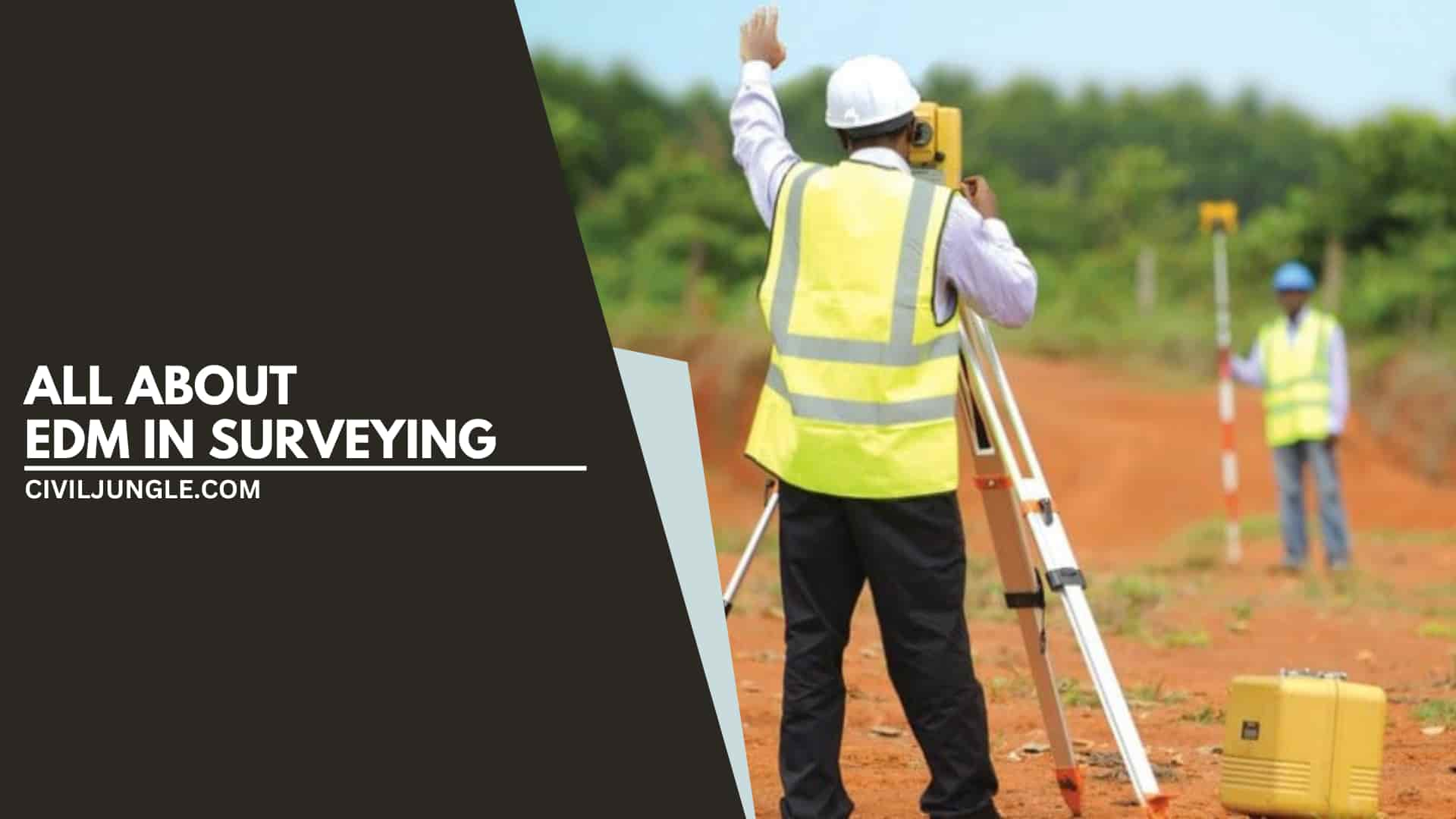
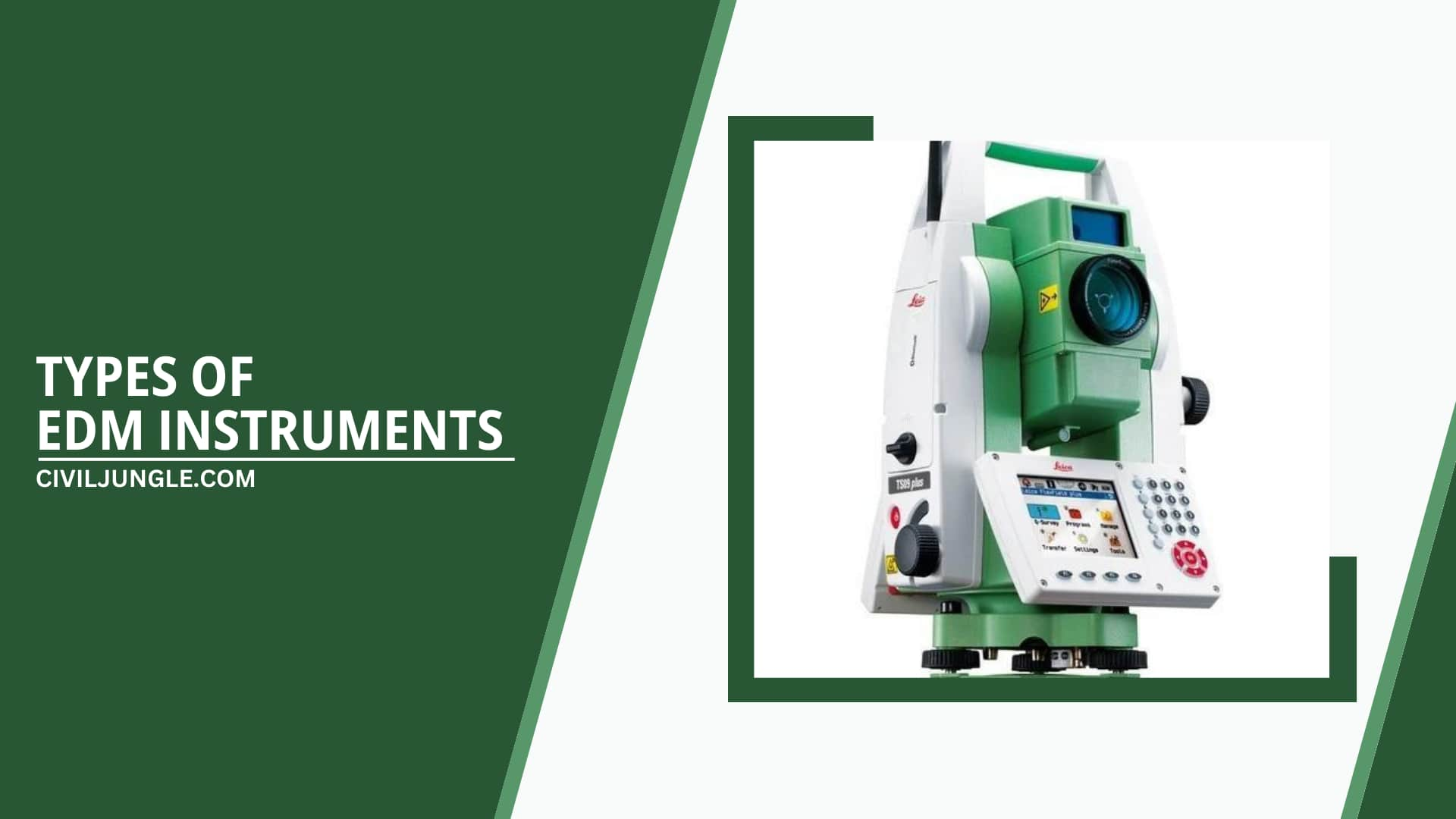
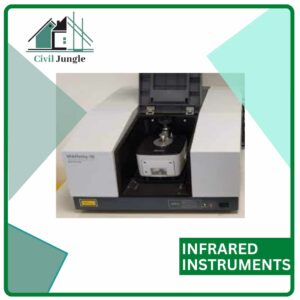

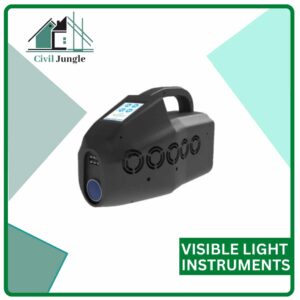
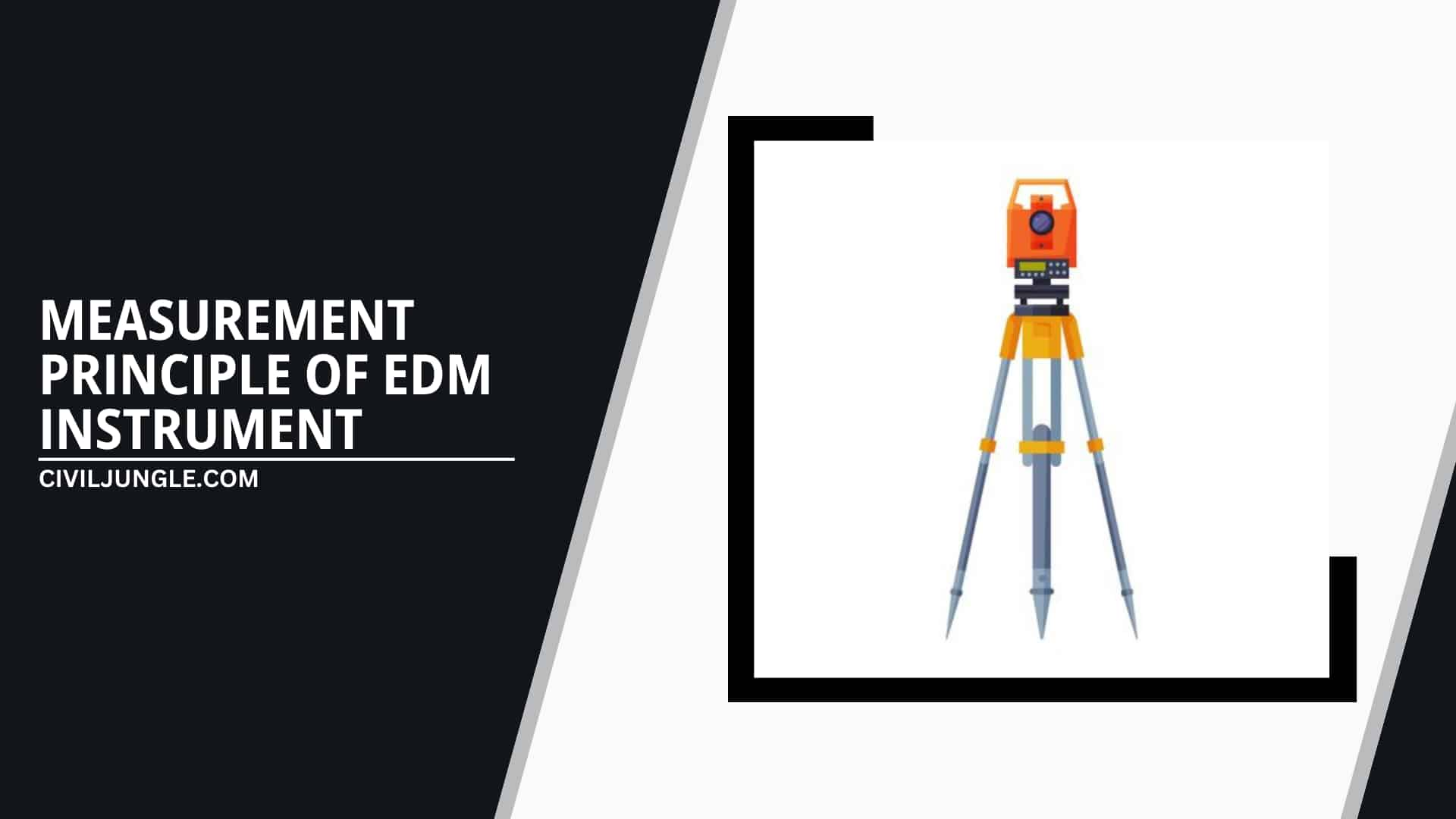
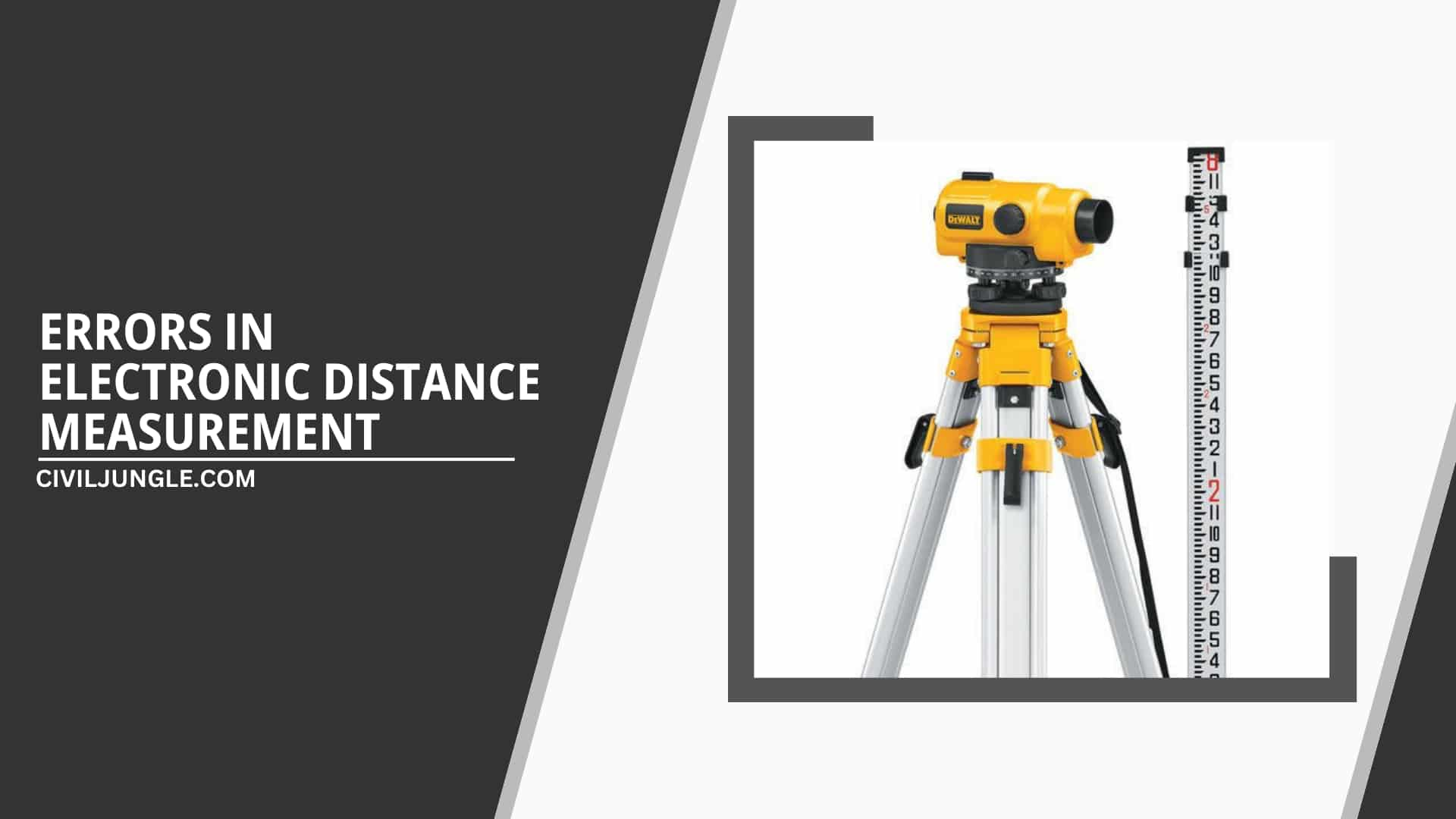
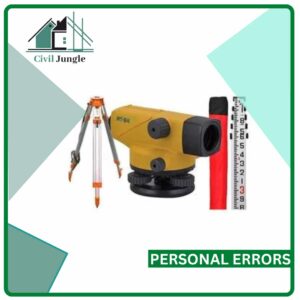
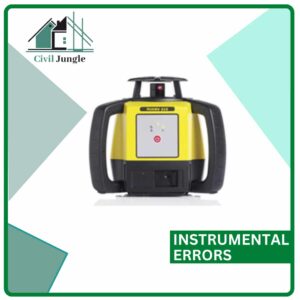
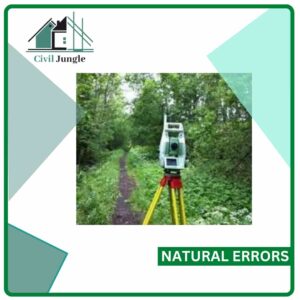

YOu R Super and LOVE your work.
Hola Krunal Rajput.
Disfruté mucho leer tu trabajo y te felicito por tu claridad y detalle.
No me dedico a la ingeniería, pero compré un beetle 500 y es interesante para mí medir ángulos
(elevación) tanto como distancias.
Gracias por compartir información. Disculpa que no te conteste en inglés porque no quiero cometer algún error de traducción. Pero sí prefiero leer tus trabajos en inglés.
Nuevamente saludos Krunal Rajput. Que estés bien.